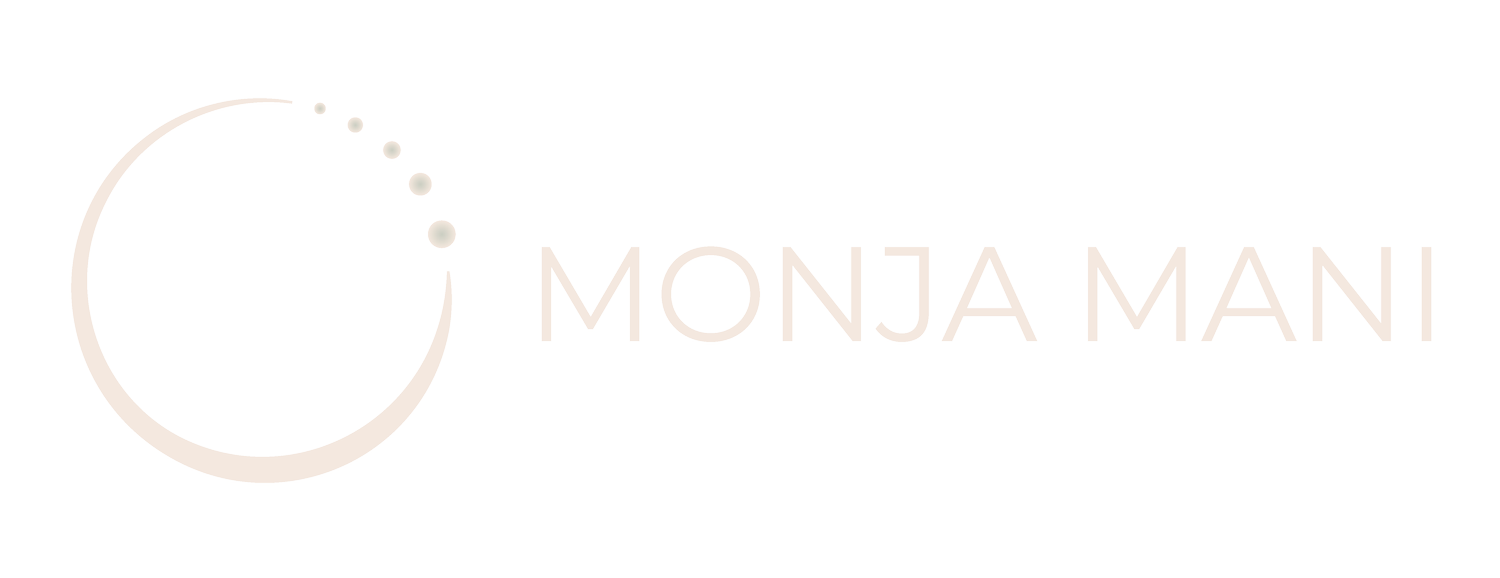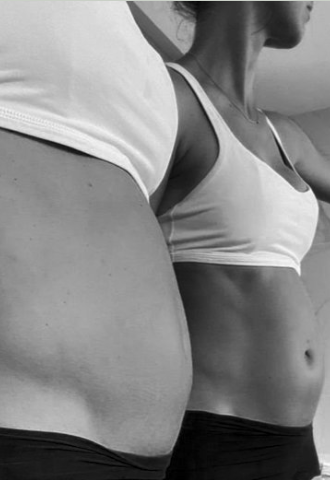DR aka ‘Mommy Tummy’
This is how my body currently looks after two pregnancies. My tummy used to be flat. Or at least „flatter“. As a former contemporary dancer and Yogini, I was always very body conscious. I take good care of my body and enjoy doing so. Daily yoga & meditation practice, healthy food, lots of water, fresh air, sleep (if not being a new mom), walks in nature and lots of cuddles with my girls. These are things that help me feel grounded and comfortable in my own skin which is very important to me. Through the years of yoga practice, I have learned that our body is our temple and we need to take good care of it - not taking it for granted.
But after two pregnancies, things are definitely different. Especially your own body - which just literally squeezed out another human being. Pregnancy and birth are such life changing and transformative experiences. It’s actually beyond words. You have to experience it yourself in order to know. And I will definitely share my magical birth story with you at some point.
But for now, I want to share the following with you: The experience of not feeling or being able to control your pelvic floor and core muscles anymore and the effects it might bring along.
After birth, I didn’t really have any control over my belly or pelvic floor muscles anymore which is quite normal. But while my tummy and core muscles bounced back quickly after my first pregnancy without any effort, unfortunately, it wasn’t the case this time. And worse, I couldn’t really feel or control it even with effort which was quite frustrating. There was simply no real sensation, no connection to it. It felt as if my pelvic floor and center got lost somewhere on the way. And in a way it did.
During pregnancy, the growing baby stretches the abdominal muscles. Obviously, your body needs to make space for the growing baby. As your uterus expands and you gain weight, more pressure bears down on your pelvic floor which can contribute to a loss of support.
The pelvic floor is essentially a group of muscles integrated together to create a support structure, like a hammock, to brace organs such as the uterus, bladder and rectum. Pelvic floor disorders occur when muscles or connective tissues of your pelvic area weaken (e.g. during pregnancy) or are injured (e.g. during birth). Due to hormonal changes during pregnancy (progesterone, estrogen, and one literally called relaxin) muscles and connective tissues such as ligaments can loosen up that usually need to work well for good pelvic floor function.
But the very common “mommy tummy” among pregnant women (about two-thirds of pregnant women have it) and newly-moms, like in my case, is actually mostly caused through an impairment characterised by a midline separation of the rectus abdominis muscles and facia due to the widening and thinning of the linea alba, called DRA.
What is DRA?
It is most commonly recognised as a condition that is highly prevalent in pregnant and postpartum women, which can be explained by the expansion of the uterus to accommodate the growing fetus. The expanding uterus causes the rectus abdominis muscles to elongate while
altering their angle of attachment, which in conjunction with hormonal elastic changes of connective tissue, leads to the stretching of the line alba resulting in an increased inter-rectus distance, displacement of the abdominal organs and a bulging of the abdominal wall. Quelle: https://www.physio-pedia.com/Diastasis_Recti_Abdominis
Unfortunately, DRA goes most of the time undiagnosed and/ or people don’t really know much about it. I have to admit, I also barely knew anything about it despite being a yoga teacher. I had briefly heard in my prenatal yoga training about it. And the common advice was mostly that core exercises should be avoided. But little did I know what this really means or how it would actually feel. Now I know that with DRA, you shouldn’t really attend any „regular“ yoga class. You basically have to take it really slow - I mean REALLY SLOW. You have to start from the beginning, with basic movements in line with your breath. You have to completely retrain your whole body and system.
With DRA, regular postpartum exercises and my own yoga practice simply wasn’t enough. I still felt I couldn’t really connect with my core and pelvic floor muscles in order to re-strengthen and rebuild it. But carrying around a growing baby, taking care of a 6-year old with all the daily household chores, let alone a move to another country, requires physical strength, good health and energy which I simply didn’t have. My back started hurting due to my weak core and pelvic floor muscles. I also didn’t really feel comfortable in my own skin. Due to breastfeeding, I had naturally lost most of the baby weight I had gained throughout pregnancy. But the protruding belly still wouldn’t change.
I get it, another might say, you just had a healthy baby and were blessed to give birth at home. Relax. Give your body the time it needs to heal naturally and recover from pregnancy and birth. You don’t need to look a certain way, like you did before pregnancy. Let go of the unnecessary pressure caused by society, social media and wrong body images.
I couldn’t agree more.
But my wish to get back into shape wasn’t just superficial. It was actually pointing out towards a much deeper connection of the physical and energetic body.
As a Yogi(ni), I’m aware of the Chakras - spiritual energy centers in the human body. The pelvic floor relates to the Muladhara Chakra (“root chakra”) which is considered the foundation of the “energy body”. The Root Chakra (mula meaning “root” and adhara meaning “support”), located at the base of the spine, is responsible for feeling “grounded”— for a sense of safety and security. It is associated with the element of earth, the sense of smell and the action of excretion.
If unbalanced, you might feel lost, lethargic, scared, unable to take actions, etc.
The solar plexus or core is related to the Manipura Chakra (“city of jewels”). This chakra is where your power and self confidence manifests. “Manipura” means a lustrous gem. The jewel or qualities associated with this chakra strengthen the digestive system and diaphragm. The solar plexus focuses on the power and autonomy of metabolism. If unbalanced, you might suffer from low self-esteem or overinflated ego, inability to commit and follow through with goals, etc.
I really wanted to regain my physical strength and stability in order to take care of my family and daily life.
I wanted to feel healthy and comfortable again in my own body and skin.
I wanted to be able to feel my body again and those areas which felt disconnected and lost.
I also wanted to figure out how I could actively help and move forward in the healing process.
Luckily I found a wonderful Pilates teacher named Juliette (https://juliettespilates.de) who focuses on pre- and postnatal training and is specialised in Diastasis recti recovery. It’s a quite simple and slow-paced practice where you learn to use your breath to properly release and relax your pelvic floor and then re-strengthen it again. It’s based on ‘The Center Method for Diastasis Recti RecoveryTM’ which is simply amazing. It has taught me so much. I can now feel my pelvic floor and core muscles more than ever did before, especially in my own yoga asana practice. I feel I now have a much better understanding of the Bandhas (energy locks) which we use during the yoga asana practice. Despite the remaining ‘mommy tummy’, I feel much more comfortable and strong in my own body again - from the inside out.This challenging experience of DRA has been a great teacher to me as a woman, mom and yoga teacher. A weak core and weak pelvic floor muscles can cause long term so many issues like incontinence, prolapsed organs, back pain,... besides the typical mommy tummy. It’s nothing that should be swept under the carpet or made small as a superficial thing.
I truly hope I can help and inspire other women to heal and recover from DRA by applying the practices I have learnt in the past few months. Stay tuned for future offerings via my website monjamaniyoga.com and I hope you feel inspired to seek professional support if you are also experiencing challenging side effects after pregnancy and childbirth like I did.
Much love, Monja

